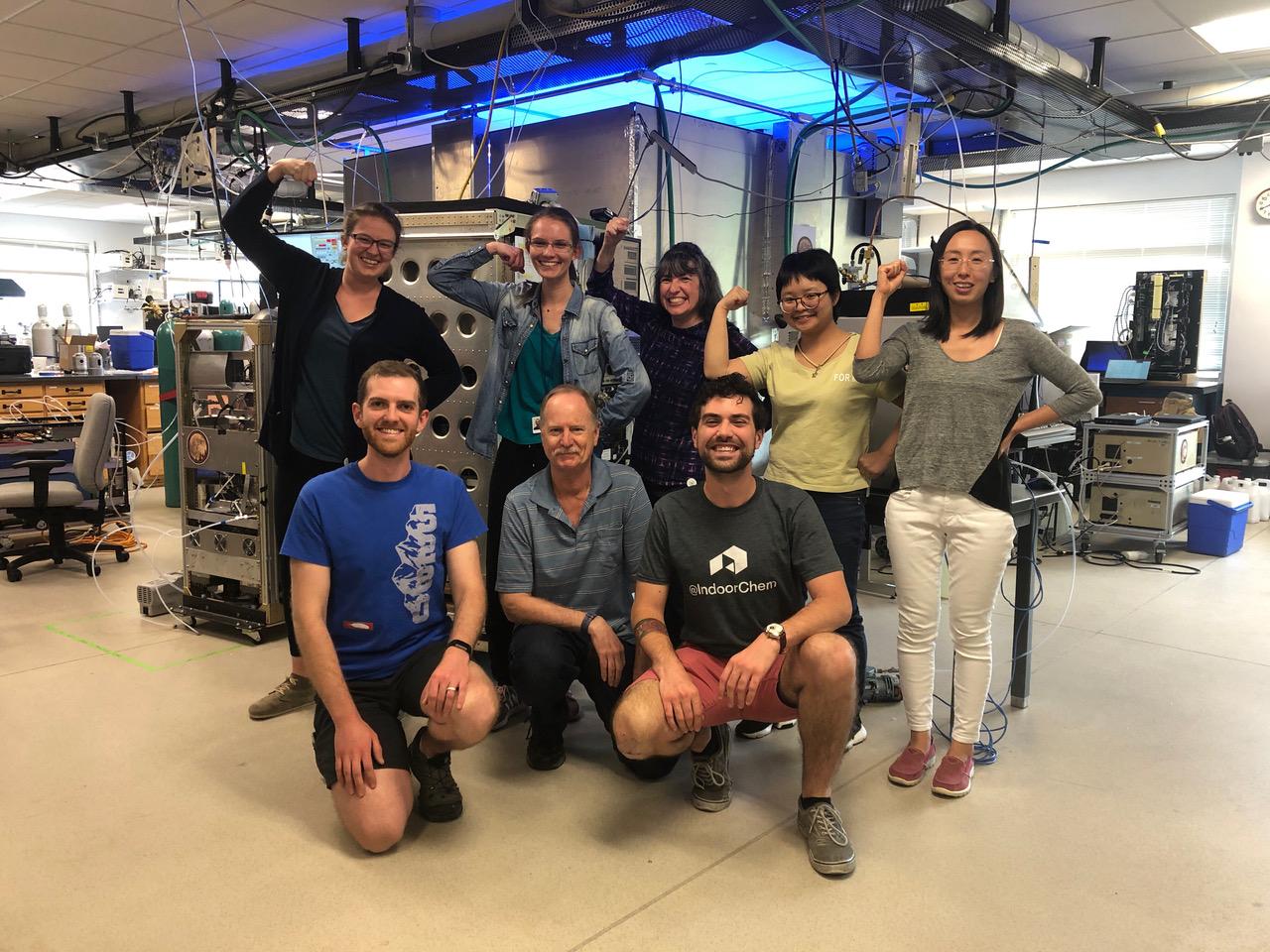Monoterpene and Oxygenated aromatics Oxidation at Night and under LIGHTs (MOONLIGHT)
A community project involving scientists (including many students and early-career scientists) from six different research groups at University of Washington, University of California Berkeley, University of Wyoming, University of Colorado (CIRES/NOAA), and Colorado State University was conducted in the NCAR Atmospheric Simulation Chamber from late May to Late June 2019. The project was designed to understand the processes involved in the daytime and nighttime oxidation of a suite of volatile organic compounds (VOCs) emitted from biomass burning, and was complementary to an NSF-funded field campaign held in Summer of 2018 (WE-CAN, Western wildfire Experiment for Cloud chemistry, Aerosol absorption and Nitrogen).
Biomass burning is the major source of primary fine carbonaceous particles and second largest contributor to black carbon emissions in the global atmosphere (Bond et al., 2013). These smoke particles are known to affect Earth’s energy budget by absorbing and scattering radiation and by modifying microphysical and radiative properties of clouds. Accurate prediction of the atmospheric consequences of biomass burning requires a mechanistic understanding of the physical and chemical transformations that occur during transport and dispersion of the fire plumes. A major focus of this project was on quantifying the optical properties of the secondary organic aerosols (SOA) formed in biomass burning plumes and interpreting these optical measurements with information obtained at molecular level. Data characterizing the evolution of both gas- and condensed-phase chemical composition have successfully been collected, and the process of data analysis is currently ongoing.

References
Bond, T. C.; Doherty, S. J.; Fahey, D. W.; Forster, P. M.; Berntsen, T.; DeAngelo, B. J.; Flanner, M. G.; Ghan, S.; Kärcher, B.; Koch, D., Bounding the role of black carbon in the climate system: A scientific assessment. J. Geophys. Res. Atmos. 2013, 118, (11), 5380-5552.
Contact
Please direct questions/comments about this page to:
Carl Drews
NSF NCAR | Research IT | ACOM